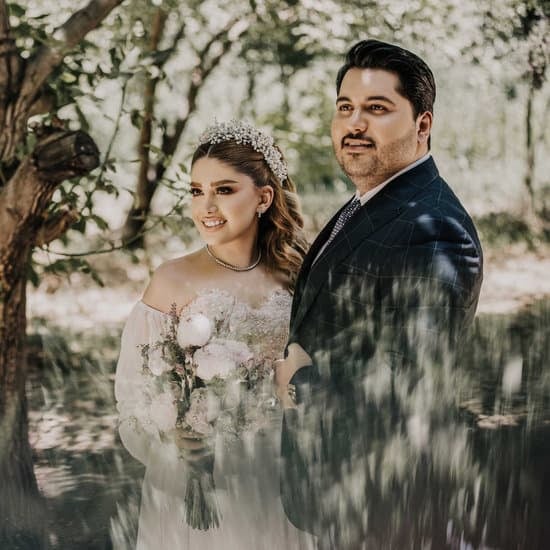When it comes to planning a wedding, the cake is often one of the many highlights of the celebration. And what’s a beautiful wedding cake without the perfect icing to top it off?
In this article, we will delve into the world of wedding cake icing, exploring the different types, essential ingredients, step-by-step guides on making buttercream icing, tips and tricks for smooth icing, decorating techniques, vegan or dairy-free options, and common mistakes to avoid. Whether you’re a professional baker or an amateur looking to make your own wedding cake, this guide will help you master the art of creating stunning wedding cake icing.
Wedding cake icing plays a crucial role in not only adding flavor but also in enhancing the overall look and feel of the cake. With so many choices available, it can be overwhelming to decide which type of icing is best suited for your specific needs. Each type serves its purpose and has its own set of unique characteristics that can contribute to making your wedding cake stand out.
In addition to discussing different types of icing and their uses, we’ll also delve into essential ingredients needed to make the perfect wedding cake icing. Understanding these ingredients is fundamental in achieving a sturdy yet creamy texture that holds up well under intricate designs and decorations.
So, if you’ve ever wondered how to make your very own delectable and visually stunning wedding cake icing from scratch, read on as we explore everything you need to know about these sweet confections.
Types of Wedding Cake Icing and Their Uses
When it comes to wedding cake icing, there are several different types to choose from, each offering its own unique flavor and texture. The type of icing you choose will depend on the overall design of your cake, the preferences of the couple, and the temperature and humidity of the wedding venue. Here are some popular types of wedding cake icing and their uses:
1. Buttercream: This classic icing is made from butter, powdered sugar, and flavorings such as vanilla or almond extract. It is smooth, creamy, and easy to work with, making it a popular choice for both filling and frosting wedding cakes.
2. Fondant: Fondant is a smooth, rolled icing that can be shaped and molded to create intricate designs. It provides a clean, polished look to wedding cakes and is often used for covering an entire cake or creating decorative elements such as flowers or ribbons.
3. Ganache: Made from chocolate and heavy cream, ganache has a rich, decadent flavor that pairs well with chocolate or fruit-flavored cakes. It can be used as a filling or frosting on wedding cakes for a luxurious finish.
4. Royal Icing: This hard-drying icing is made from confectioners’ sugar and egg whites, giving it a crisp texture that’s perfect for intricate piping details on wedding cakes.
Each type of icing offers its own set of advantages and can be used in combination to create stunning wedding cake designs. Understanding the properties of each icing will help you decide which one will work best for your specific cake design.
Now that we have covered the various types of wedding cake icings and their uses let’s take a deeper dive into how to make buttercream wedding cake icing at home.
Essential Ingredients for Making Wedding Cake Icing
When it comes to making wedding cake icing, there are several essential ingredients that you will need in order to achieve the perfect texture and flavor. The most common types of icing for wedding cakes include buttercream, royal icing, fondant, and ganache. Each type of icing requires different ingredients to make, but there are a few key components that are essential in most recipes.
One of the most important ingredients for making wedding cake icing is confectioners’ sugar, also known as powdered sugar. This is the base for many types of icing and helps to create a smooth and creamy texture. Another essential ingredient is unsalted butter, which adds richness and flavor to buttercream icing. For royal icing, meringue powder or egg whites are necessary to create a smooth and firm consistency.
In addition to these basic ingredients, other common components include vanilla extract or other flavorings for added taste, as well as milk or heavy cream to adjust the consistency of the icing. Depending on the type of wedding cake icing you choose to make, you may need additional ingredients such as corn syrup for fondant or chocolate for ganache. Overall, the quality of your ingredients will greatly impact the final result of your wedding cake icing.
| Ingredient | Common Use |
|---|---|
| Confectioners’ sugar | Base for many types of icing |
| Unsalted butter | Adds richness and flavor |
| Milk or heavy cream | To adjust consistency |
| Vanilla extract or flavorings | Adds taste |
Step-by-Step Guide on Making Buttercream Wedding Cake Icing
Buttercream icing is one of the most popular choices for wedding cakes due to its creamy texture and sweet flavor. Making your own buttercream icing can be a rewarding experience, and it allows you to customize the flavor and color to your preference. Here is a step-by-step guide on how to make buttercream wedding cake icing:
- Start by gathering the necessary ingredients, including unsalted butter, powdered sugar, vanilla extract, and milk or heavy cream. It’s important to use unsalted butter to have better control over the flavor of your icing.
- Begin by creaming the butter in a stand mixer or with a handheld mixer until it is smooth and creamy. This step is crucial as it aerates the butter, resulting in a lighter and fluffier texture for your icing.
- Gradually add the powdered sugar to the creamed butter, mixing on low speed until well combined. Be sure to scrape down the sides of the bowl occasionally to ensure that all ingredients are fully incorporated.
- After adding all the powdered sugar, mix in the vanilla extract and a small amount of milk or heavy cream to achieve your desired consistency. Adding liquid gradually will help you control the thickness of the icing.
- Once all ingredients are combined, beat the mixture on medium-high speed for 3-5 minutes until the icing becomes light and fluffy.
- Your buttercream wedding cake icing is now ready to use. You can store any leftover icing in an airtight container at room temperature for up to three days or in the refrigerator for up to two weeks.
Here are some options you can use when making vegan or dairy-free options you can use:
Making your own wedding cake icing allows you full control over its flavor, texture, and color while ensuring that it suits any dietary restrictions you may need to consider for your guests’ preferences. By following this step-by-step guide using quality ingredients ensures your wedding cake will be beautiful both inside and out.
Tips and Tricks for Perfectly Smooth Wedding Cake Icing
Achieving a perfectly smooth wedding cake icing can be a daunting task, but with the right tips and tricks, you can create a flawless finish that will leave your guests in awe. The key to achieving a smooth icing lies in the preparation and application process. One of the most important tips for getting a smooth icing is to ensure that your cake layers are level and properly crumb coated before applying the final layer of icing.
Another tip for achieving perfectly smooth wedding cake icing is to invest in quality tools. Using an offset spatula and a bench scraper can make all the difference when it comes to getting that seamless finish. Additionally, using a turntable can help you evenly apply and smooth out the icing around the entire cake.
When applying the final layer of icing, it’s important to work quickly but carefully. Start by applying a generous amount of icing to the top of the cake, then use an offset spatula to spread it outwards towards the edges. Once you have covered the top, move on to the sides of the cake and use a bench scraper to remove any excess icing while smoothing out the surface.
Lastly, don’t be afraid to use a hot spatula or warm water to help smooth out any imperfections in your wedding cake icing. By running a hot spatula or dipping it in warm water and then smoothing over the surface of your icing, you can achieve that coveted flawlessly smooth finish. These tips and tricks will undoubtedly help you master the art of creating perfectly smooth wedding cake icing for your special day.
Decorating Techniques for Wedding Cake Icing
When it comes to decorating a wedding cake with icing, there are several techniques that can create stunning and elegant designs. From simple borders to intricate piping, the possibilities are endless for creating a beautiful masterpiece that will be the centerpiece of the wedding reception.
Piping
Piping is a classic technique used to decorate wedding cakes, and it involves using a piping bag and various tips to create intricate designs. Some popular piping techniques include creating delicate lace patterns, elegant scrolls, and intricate floral designs. With a steady hand and some practice, you can achieve professional-looking results that will impress your guests.
Fondant Accents
Fondant is a versatile icing that can be shaped and molded into various decorative accents for wedding cakes. From delicate flowers and leaves to ribbons and bows, fondant allows for endless creativity when it comes to adding details to your cake. Whether you opt for pre-made fondant decorations or decide to make your own, fondant accents can add a touch of sophistication to your wedding cake design.
Stenciling
Stenciling is another popular technique for adding intricate designs to wedding cake icing. By using food-safe stencils and edible dust or powdered color, you can create beautiful patterns on your cake’s surface. This technique works particularly well for creating detailed backgrounds or borders that complement the overall design of the cake.
By mastering these decorating techniques, you can elevate the appearance of your wedding cake icing and create a stunning confection that will leave a lasting impression on all who attend the celebration.
Vegan or Dairy-Free Options for Wedding Cake Icing
When it comes to wedding cake icing, it’s important to consider the dietary restrictions and preferences of the couple and their guests. For those who follow a vegan lifestyle or are lactose intolerant, there are plenty of options available for creating delicious and beautiful wedding cake icing without using traditional dairy products.
Whether you’re a professional baker or the bride-to-be wanting to make your own cake, these vegan and dairy-free options will ensure that everyone can enjoy a slice of your special day.
Substituting Dairy Products
Traditional wedding cake icing often includes butter, milk, and cream cheese, all of which are off-limits for vegans and those with dairy allergies. However, there are easy swaps that can be made to create a similar texture and flavor without using animal products.
For example, coconut oil can be used instead of butter in many icing recipes, while almond milk or soy milk can replace regular milk. Additionally, vegan cream cheese alternatives made from ingredients like cashews or tofu can provide the creamy texture needed for certain types of icing.
Using Plant-Based Ingredients
For those looking for a completely plant-based approach to wedding cake icing, there are plenty of options that utilize natural ingredients such as avocados, bananas, or nut butters. These ingredients can not only add richness and moisture to the icing but also provide a unique flavor profile that pairs well with various cake flavors.
In addition, ingredients like powdered sugar and pure vanilla extract are commonly used in vegan and dairy-free icings to sweeten and enhance the overall taste.
Experimenting With Flavors
One advantage of exploring vegan or dairy-free options for wedding cake icing is the opportunity to experiment with different flavors and textures that may not be achievable with traditional ingredients. From incorporating fresh fruit purees into the icing to infusing it with aromatic spices or citrus zest, there are endless ways to personalize the flavor profile of your wedding cake icing while keeping it vegan-friendly.
By thinking outside the box and being open to alternative ingredients, couples can create a truly unique and memorable dessert for their special day.
Common Mistakes to Avoid When Making Wedding Cake Icing
When it comes to making wedding cake icing, there are some common mistakes that can easily be avoided with the right knowledge and techniques. Here are some of the most common pitfalls to watch out for when preparing your wedding cake icing:
1. Overmixing the Icing: Overmixing can lead to a runny or grainy consistency in your icing. To avoid this, be sure to mix your icing just until all the ingredients are well combined.
2. Not Allowing Ingredients to Reach Room Temperature: Using cold butter or other dairy products straight from the fridge can result in lumpy or uneven icing. It’s important to allow these ingredients to come to room temperature before using them in your recipe.
3. Adding Too Much Liquid: Adding too much liquid, such as milk or flavorings, can make your icing too thin and difficult to work with. Be sure to add liquid gradually and only as needed to achieve the desired consistency.
By being aware of these common mistakes and knowing how to avoid them, you can ensure that your wedding cake icing turns out smooth, delicious, and perfect for your special day.
With these tips in mind, you can confidently prepare your wedding cake icing without falling into common pitfalls that could affect the outcome of your beautiful creation.
Conclusion
In conclusion, mastering the art of wedding cake icing is a key element in creating the perfect confection for any special occasion. Whether you choose to use buttercream, fondant, royal icing, or a vegan alternative, understanding the types and uses of each option is essential in achieving the desired look and taste for your wedding cake.
Additionally, paying close attention to the quality of ingredients and following a step-by-step guide will ensure that your wedding cake icing turns out smooth and delicious.
Remember that practice makes perfect when it comes to decorating techniques for wedding cake icing. By experimenting with different tools and methods, you can elevate the appearance of your cake to match the grandeur of the occasion. Furthermore, being aware of common mistakes to avoid will help you troubleshoot any issues that may arise during the process of making wedding cake icing.
Ultimately, creating the ideal wedding cake requires patience, precision, and a willingness to learn from trial and error. With dedication and attention to detail, you can achieve beautifully decorated wedding cake icing that will leave a lasting impression on your guests. So go ahead – get creative in perfecting your wedding cake icing for an unforgettable sweet ending to your special day.

I have been involved in marriages for over 20 years helping couples and singles understand more about them.





